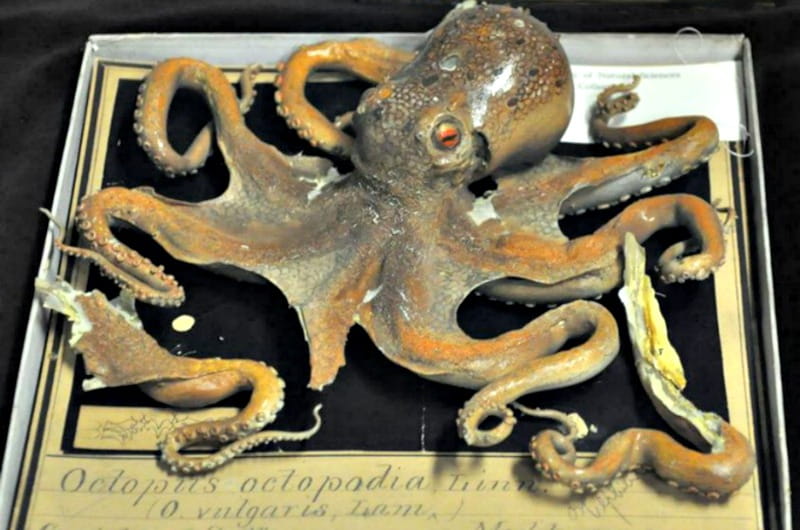Hidden Treasures: Art of the Abyss
 By Katie Clark
By Katie Clark

Invertebrate animals such as squid and sea slugs are notoriously difficult to preserve as specimens. In formaldehyde or alcohol, they shrink and lose their colors, and if allowed to dry out they become little more than raisins.
In the late 19th century, father-and-son German glass artisans Leopold and Rudolph Blaschka, who got their start making jewelry and glass flowers, recognized the need to capture the delicacy and beauty of these sea animals, both for art’s sake and for scientific study. Working from Dresden over a 30-year period, they expanded their catalogue to over 700 models. Each piece was made to order, and were purchased by academics and collectors alike through dealers like Ward’s Natural Science Establishment in Rochester, New York.
The specimens in the Academy’s glass invertebrate collection, numbering just under 50 pieces, were mostly purchased from Ward’s in the late1870s by Joseph Leidy, the Academy’s preeminent naturalist, George W. Tryon, the first chairman of the Department of Malacology, and Anna T. Jeanes, a well-known Philadelphia socialite and philanthropist.
The Blaschkas craftsmanship and accuracy caught the eye of Leidy who, in 1879, wrote in the Proceedings of the Academy of Natural Sciences that the Blaschka models are “remarkable for their accuracy and beauty…They represent soft and delicate forms which cannot be satisfactorily preserved, and others too minute to be examined with the naked eye. Moreover, their price is so moderate, that it is to be hoped that the Academy may make early provision to obtain a series.” Records shows that Leidy placed an order that same year.
The delicacy of the models meant that long-term preservation was difficult. Due to poor storage conditions and the fragile nature of the materials, the Academy’s collection of Blaschka glass has deteriorated over time. Fortunately, glass experts have had great success restoring these materials and Academy archivists hope to someday embark on a similar conservation project for its own Blaschka collection.
“Unfortunately, the Blaschkas don’t come out much anymore,”says Jennifer Vess, the Academy’s Brooke Dolan Archivist. “They are very delicate and some of the more complex pieces have been damaged. We would very much like to have those conserved so they can come out on display more often.”
In This Article
Drexel News is produced by
University Marketing and Communications.
